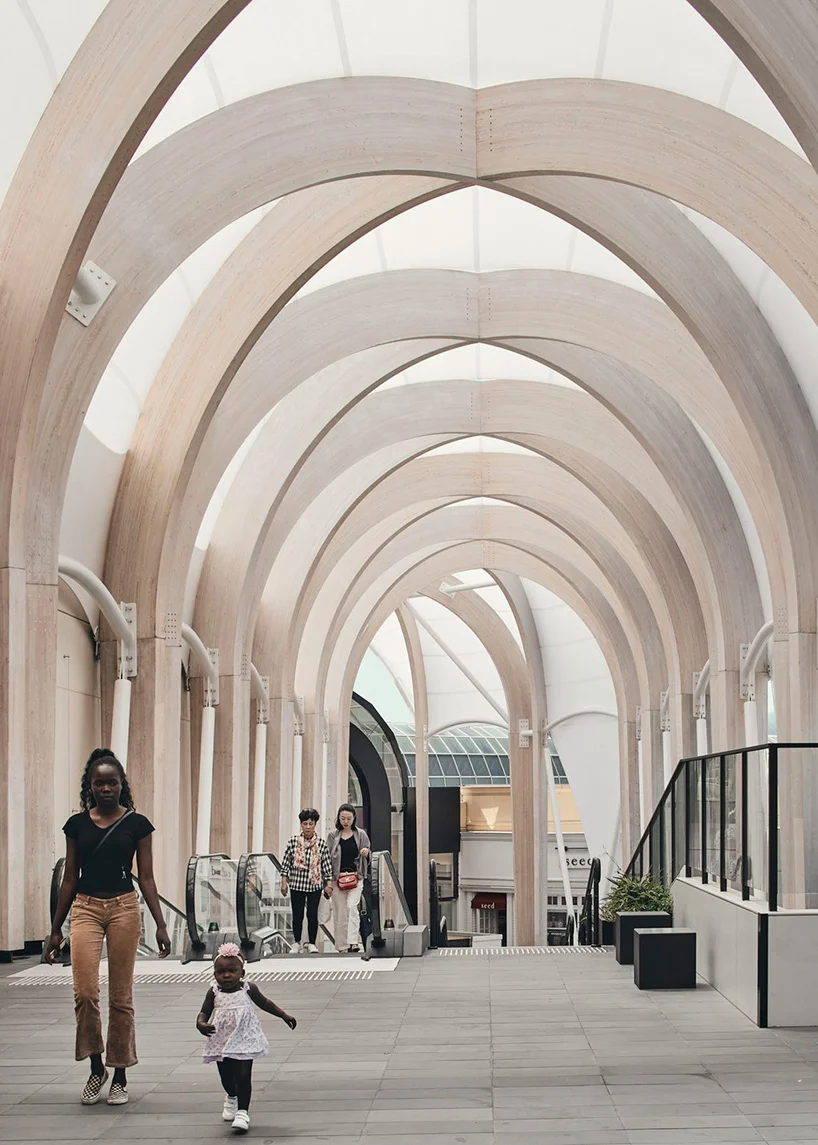Curating shopping streets post Covid-19

The Link at Chadstone, Melbourne Australia by Make Architects
Future Cities Forum has been looking over the past weeks at the future design of high streets, shopping malls and retail centres following the outbreak of Covid-19.The crisis has prompted discussions around the importance of not only social distancing but well-being in our towns and cities, and the value of proper place-making.
The Mayor of London has announced a bold new Streetspace plan to overhaul the capital's streets in the face of the crisis. The transformation of London's roads is being fast-tracked giving space to new cycle lanes and wider pavements to enable social distancing.
Camden High Street and Stoke Newington High Street have already been widened and further locations are planned. These temporary measures will be reviewed and could become permanent in the future. There is also an intention to completely transform town centres to enable local journeys to be safely walked and cycled where possible.
Improving street design is currently on the agenda for many of the UK's councils, which are looking to attract shoppers and tourists back to ailing city and town centres post the virus outbreak.
One interesting project that has caught the attention of Future Cities Forum - over the other side of the world - is Make Architects' Australian project, 'The Link', at the Chadstone shopping centre in Melbourne. Designed to connect the shopping centre, which is the largest in the Southern Hemisphere, with the newly opened Hotel Chadstone, Melbourne, The Link is a tranquil walkway that replaces part of a multi-level car park and creates a more accessible, engaging entrance to Chadstone - the Fashion Capital.
Specialist materials from Europe were used with Australian experts and engineers to create the route that spans 110 m, stretches up to 15 m high and blurs the boundary between different leisure, commercial and retail uses at the centre and also between an internal and external environment.
The Link is formed from a curved 'glulam' timber structure with a tensile, semi-translucent 'PTFE' fabric stretched over to protect customers, guests and visitors from the weather, yet still connect people to the environment.
Landscaping, stairs and travellators have been positioned to create areas to dwell and relax as well as space for a new restaurant to spill out and flexible areas for events and pop-up uses. The choice of planting ties in with the wider strategy for Chadstone to use native species. This is supported with evergreen climbing plants such as climbing Boston Ivy and scented Jasmine to provide a broader sensory experience.
The design itself is highly sustainable, open at the sides to provide cross-ventilation and eliminate the need for air conditioning. Artificial lighting has been kept to a minimum.
Simon Lincoln, Make's studio lead said:
'The Link is a great example of how retailers and landowners are thinking differently to adapt to changing consumer behaviour, incorporating new uses into their centres, but also creating flexible spaces like this, spaces that don't necessarily drive revenue but that tap into what patrons are looking for in terms of places that promote well-being and that provide a more relaxed, natural environment.'
Fiona Mackenzie, Chadstone director commented:
'We're very proud of what we're creating as Chadstone evolves to become a world-class, integrated destination for retail, dining, entertainment, tourism, business and now luxury accommodation. The Link has enhanced the amenity for the more than 24 million people who move between our Tower One offices, Hotel Chadstone and the retail precinct every year.'
Jacob Alsop, partner at Make Architects concluded:
'The Link is designed with the local climate in mind. It provides shade but is an open structure and provides a welcome change from the many hermetic air-conditioned buildings that dominate Australian cities. Its form is inherently urban, reminiscent of covered passageways and thereby reinforces the idea of The Link as a street and also a public, civic space.'